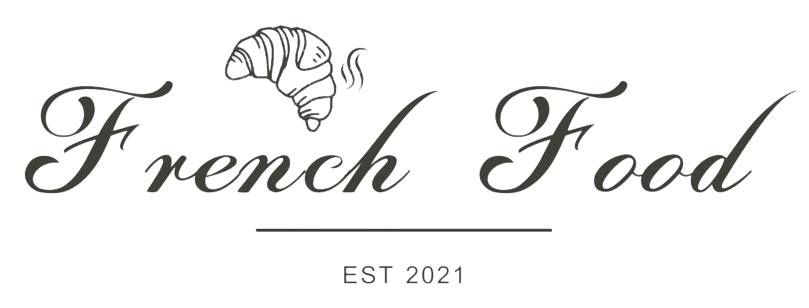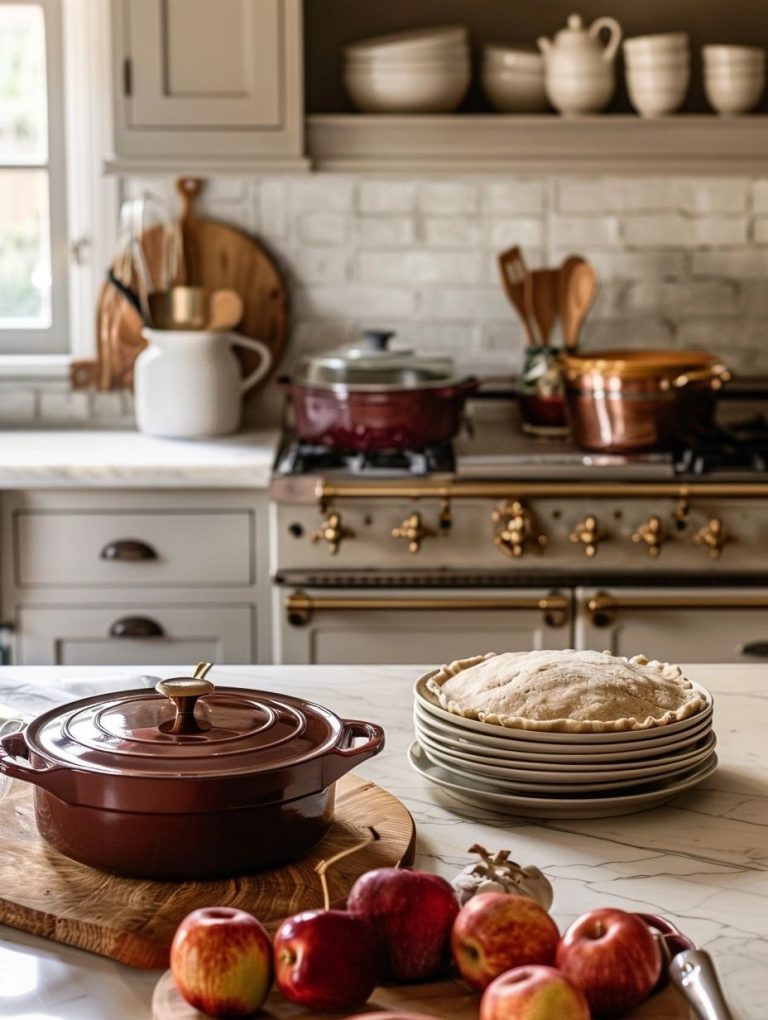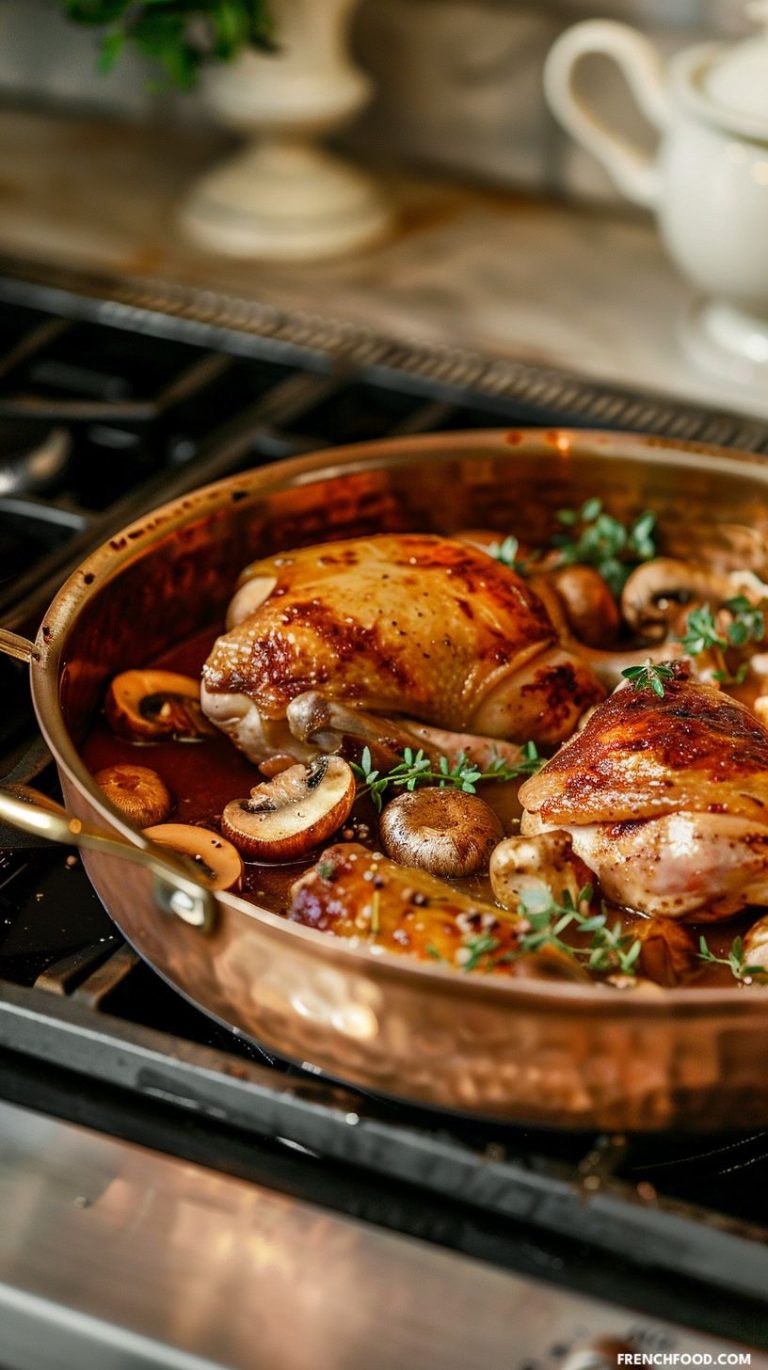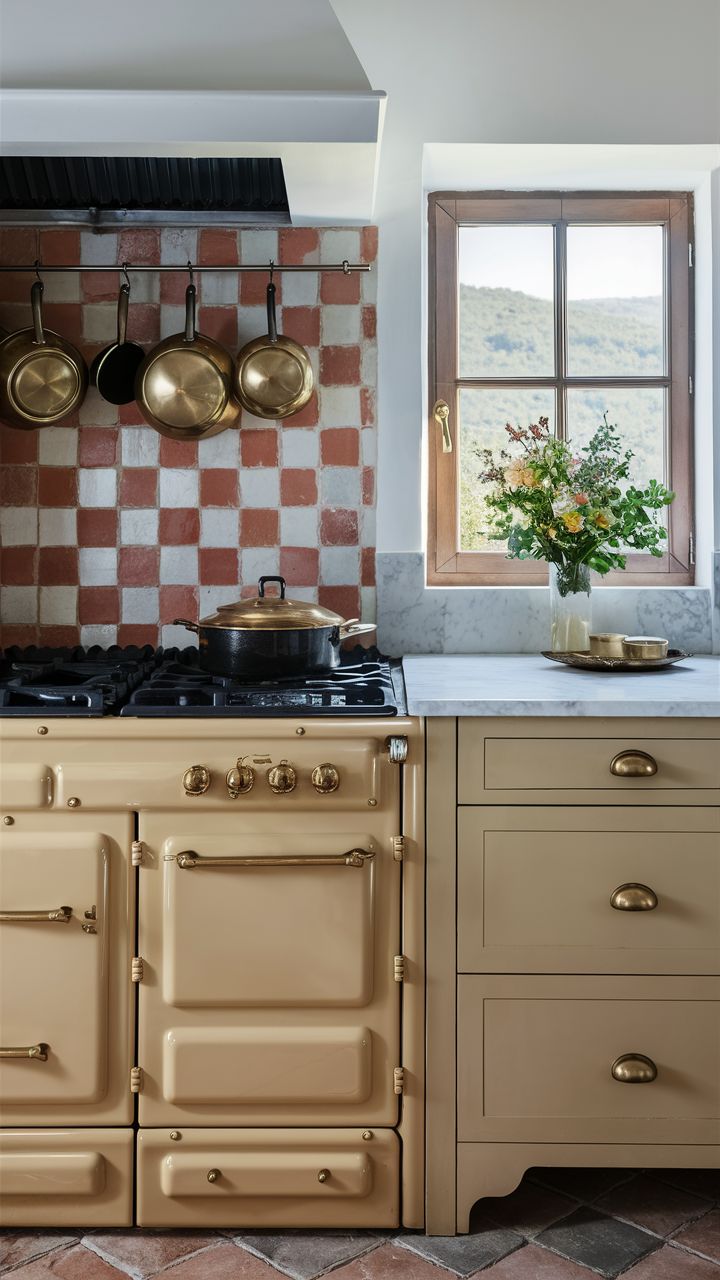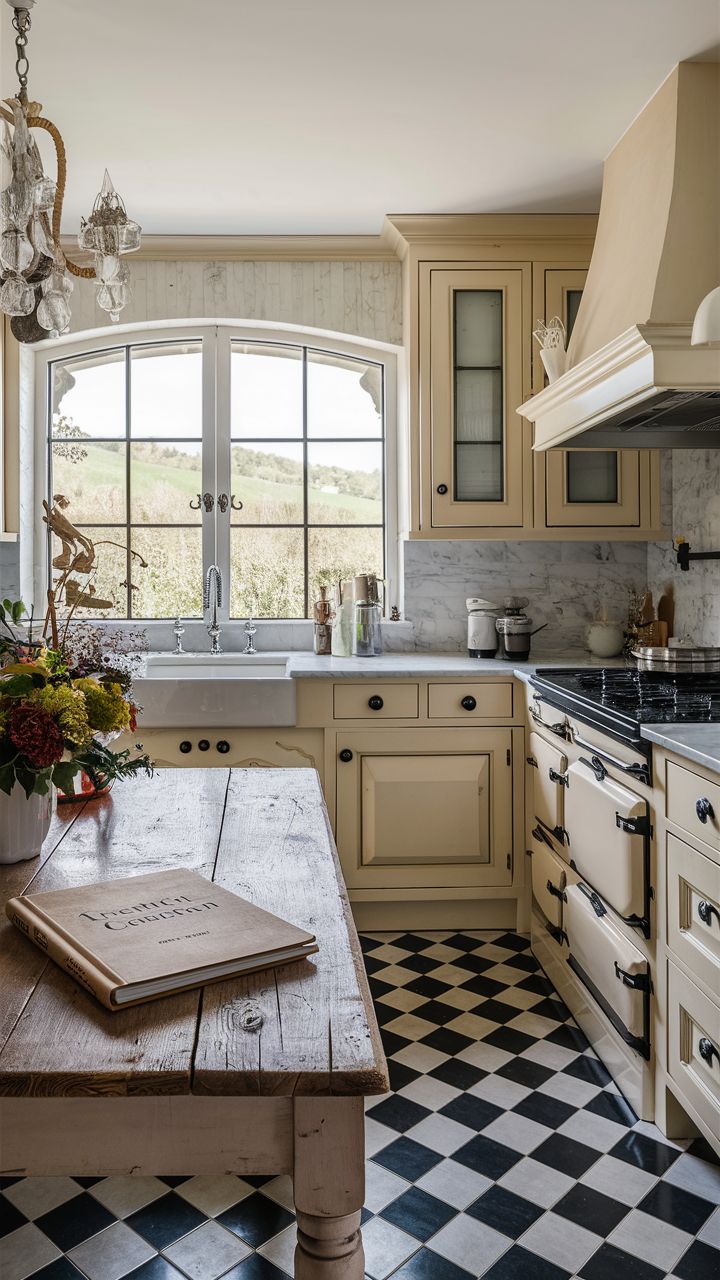French Cooking Basics: How to Get Started Making French Meals
We may earn a commission through all links on this website. As an Amazon Associate, we earn from qualifying purchases.French cooking is renowned for its rich flavors, delicate sauces, and elegant presentation. French cuisine is considered one of the finest and most sophisticated culinary traditions in the world and has greatly influenced modern Western cooking. From the classic dishes of Parisian bistros to hearty rural fare, French cooking is known for its use of fresh, seasonal ingredients and classic techniques that have been passed down through generations. It’s the home of the brigade de cuisine kitchen hierarchy system and the birthplace of Michelin-star restaurant grading.
Behind the fanciness of haute cuisine, there are several French cooking basics that form the foundation for all French meals. Certain cooking principles are memorized by heart by the most experienced French chefs.
Let’s learn the basics of French cooking, including essential ingredients, popular cooking methods, and the building blocks of classic French dishes.
French Cooking Culture
In France, cooking and food are deeply ingrained in the culture and considered an essential part of daily life. Meals are a time for family and friends to gather and enjoy good food and conversation. French cuisine is seen as a form of art, and there is a strong emphasis on using high-quality, seasonal ingredients and traditional cooking techniques. Eating out is also a popular pastime, with many renowned restaurants and bistros serving the best French dishes. In France, cooking and dining are not just about sustenance, but also about savoring flavors, enjoying the moment, and creating memories.
Common French Cooking Terms
There are lots of French cooking terms to know, but the basics involve understanding how food is prepared, cooked, seasoned, and served in French.
To prepare food, you’ll need to follow the instructions to create the dish comme il faut, as necessary and up to standards in order to respect the chef’s dish.
Food prepared at home is referred to as fait maison, or homemade. Restaurants also use this term to signify the food has been prepared in-house.
When ordering food, you’ll need to specify whether you want the food to be bien cuit, well-cooked, or cru, raw. Bien cuit can refer to a well-done steak or a slightly burnt and crunchy baguette depending on the context.
If you’re at a restaurant, the waiter will ask you which cuisson you prefer for your steak. The French have their own words for steak cooking levels from rare to well-done, which don’t always align with American terms. The French say: bleu, saignant, à point, and bien cuit when ordering steaks.
The finishing touches of food involve seasoning a dish with herbs and spices. Use spices carefully as most French dishes aren’t too pimenté, or spicy!
Lastly, serving food à la minute refers to the idea that food must be served straight away after it’s done and ready to eat.
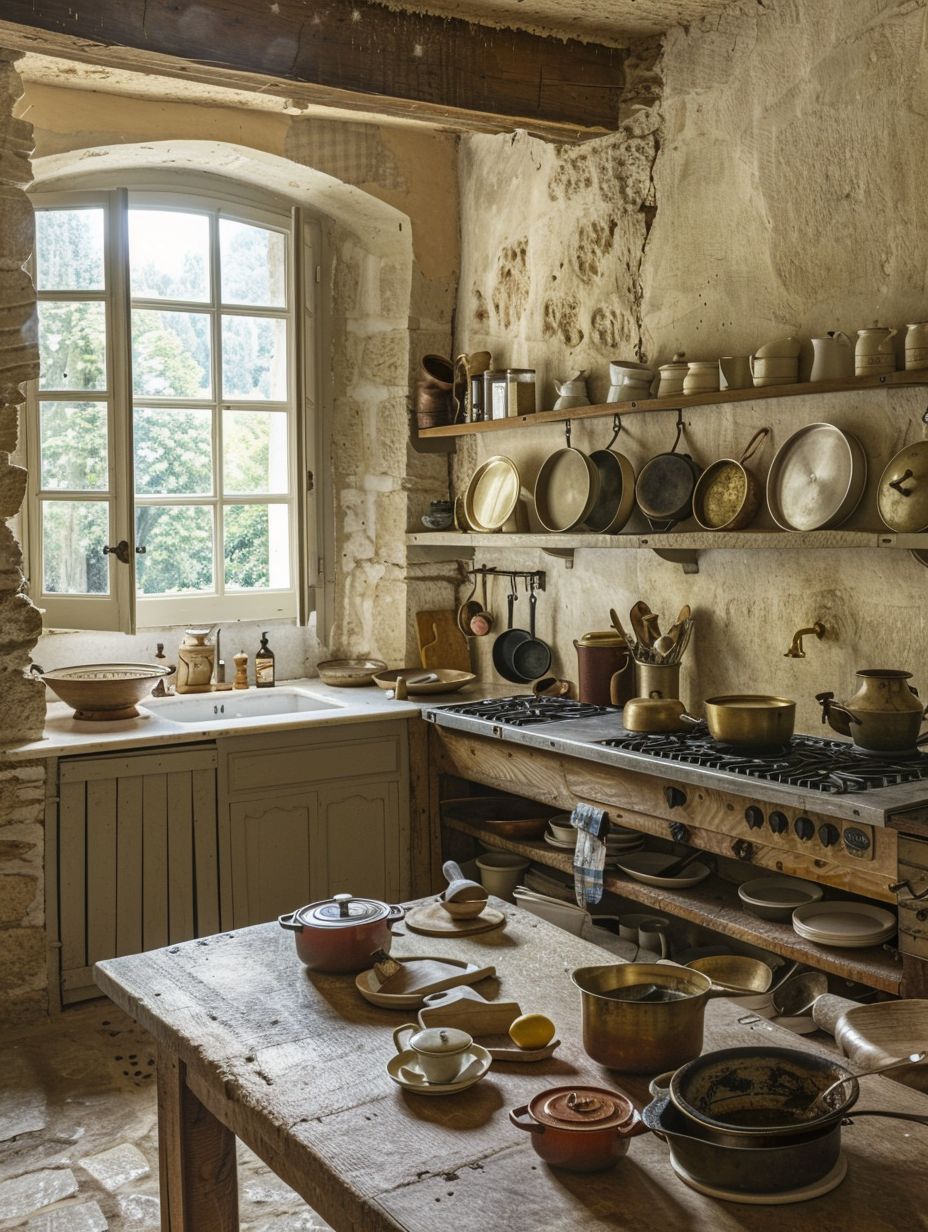
Basic French Cookware
French cookware is characterized by its durability, versatility, and heat retention properties. The following are some of the most commonly used pieces of French cookware necessary to make French meals:
- Cast Iron Skillet: A heavy, sturdy skillet that is ideal for searing meat and browning vegetables.
- Saucepan: A versatile pan with straight sides and a tight-fitting lid, perfect for making sauces, soups, and stews.
- Dutch Oven: A heavy pot with a tight-fitting lid that is perfect for braising meat and making stews.
- Saute Pan: A shallow pan with sloping sides, used for quickly browning food and making sauces.
- Roasting Pan: A large, rectangular pan with a rack, used for roasting meats and vegetables.
- Stockpot: A large pot used for making stocks and broths.
- Baking Dish: A shallow, rectangular dish used for baking casseroles, gratins, and baked goods.
These are some of the basic French cookware and are a good starting point for building a functional kitchen. The use of high-quality materials, such as cast iron and stainless steel, ensures that French cookware will last for many years and provide consistent, even heating.
Popular French Meal Ingredients
French cooking is known for its ample use of cream and butter, but it also favors locally sourced ingredients and fresh produce. French cooking uses seasonal elements to create scrumptious flavor combinations.
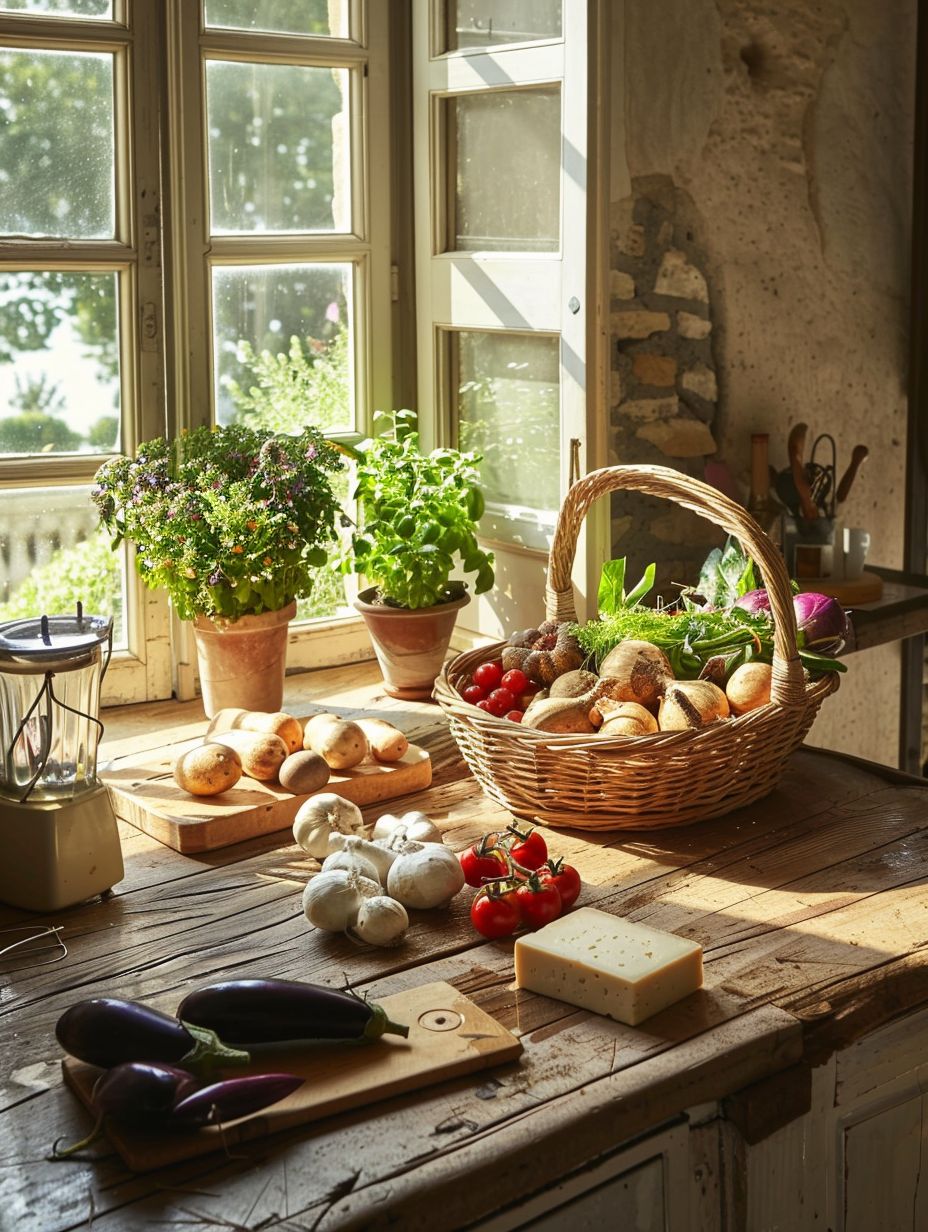
Some of the most common ingredients in French cooking include:
- Meats: Chicken, beef, pork, lamb, and duck and common in meat-based French dishes.
- Seafood: Cod, sole, salmon, mussels, shrimp, and snails are some of the fresh and saltwater seafood ingredients.
- Vegetables: potatoes, mushrooms, eggplant, garlic, onions, carrots, and leeks. These are used in cooked dishes from soups and stews to sauces and sautéed dishes.
- Butter: A staple ingredient in French cooking, used for its rich flavor and versatility.
- Cheese: France is famous for its wide variety of cheeses, including Brie, Camembert, Roquefort, and many others.
- Wine: Red and white wines are commonly used in cooking and as a drink accompaniment to meals.
- Herbs: Thyme, basil, bay leaves, rosemary, and parsley are commonly used herbs in French cooking.
These ingredients form the foundation for many of the best French recipes and are used to create rich, flavorful plates.
Cooking Prep and Setup
In France, prep work, or getting set up, is an important aspect of cooking and is approached with care and precision. A key part of meal preparation is the mise en place concept which translates to “putting in place.”
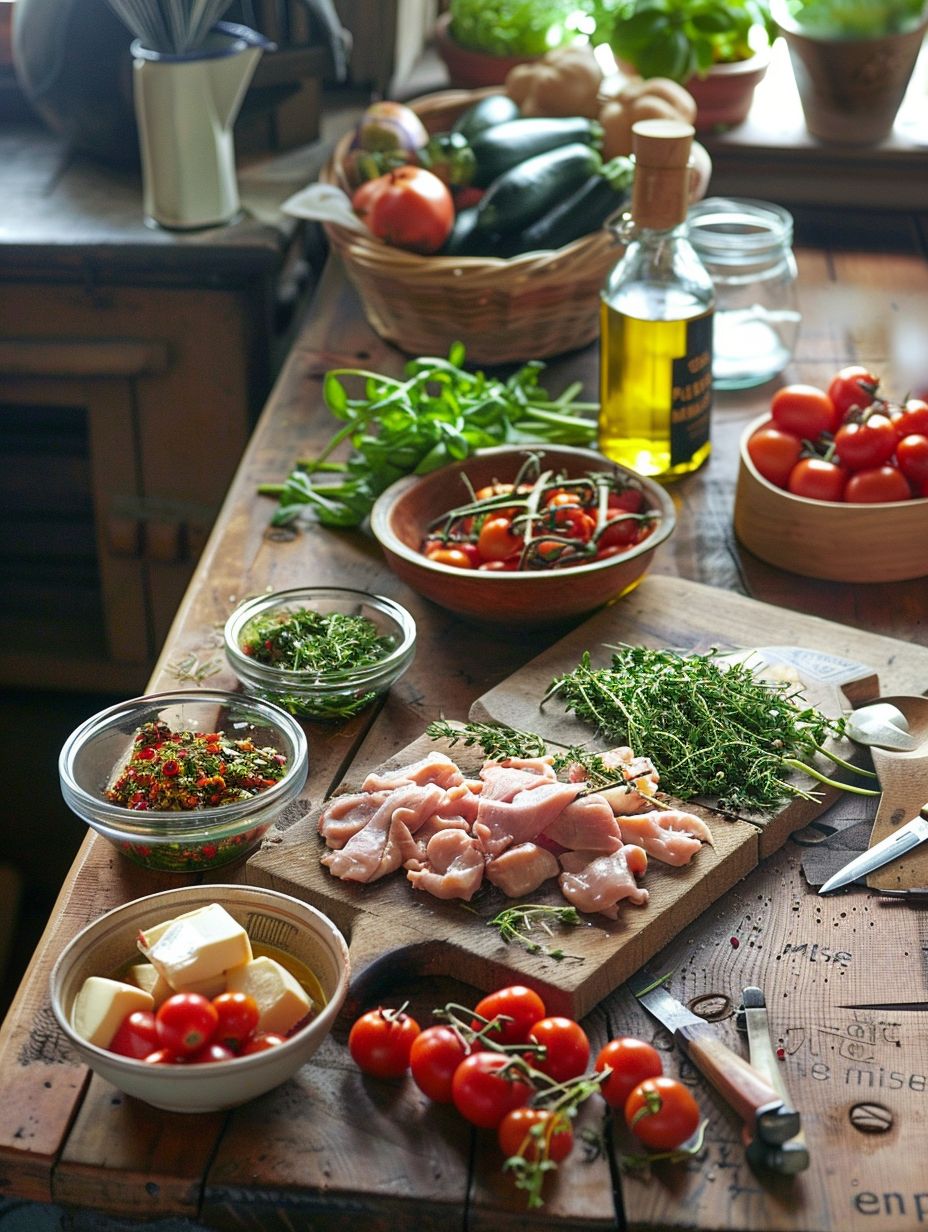
It refers to the setup, preparation, and organization of all ingredients and tools before cooking, allowing for a smooth and efficient cooking process.
Mise en place involves a chef washing the food, measuring out ingredients, chopping vegetables and herbs, and having all the necessary cooking equipment ready to use.
The mise en place approach to meal preparation is a staple of French cuisine and is a crucial step in creating dishes that are both delicious and visually appealing.
In France, meal prep is not just a practical first step, but also a chance to showcase one’s attention to detail.
French Knife Cuts
Learning knife cuts is an important part of the French cooking basics because it allows for consistency in the size and shape of ingredients, which in turn affects cooking time and the final presentation of a dish. Precise cutting also allows for more efficient use of ingredients, as well as more uniform cooking.
In French cuisine, ingredients are often cooked based on their size and shape, and precise cuts can greatly impact the final dish. For example, uniform diced onions will cook more evenly and will result in a more uniform sauce, while unevenly cut vegetables may cook at different rates and result in a less desirable texture.
Precise knife cuts greatly enhance a dish’s appearance upon final presentation. French cuisine places a great emphasis on the appearance of food, not just its taste, and precise cuts can make a dish look more elegant and professional.
It takes time and practice to master knife skills, but the results are worth it!
Basic French Cooking Skills
There are several basic cooking skills you should master before beginning to make complicated dishes. The basic French food preparations include:
- How to make a crêpe
- How to boil an egg
- How to bake a potato
- How to make a bouquet garni
- How to make French stocks
- How to make a mirepoix
French Cooking Methods
French cuisine is renowned for its standard cooking methods designed to bring out the best in fresh ingredients.
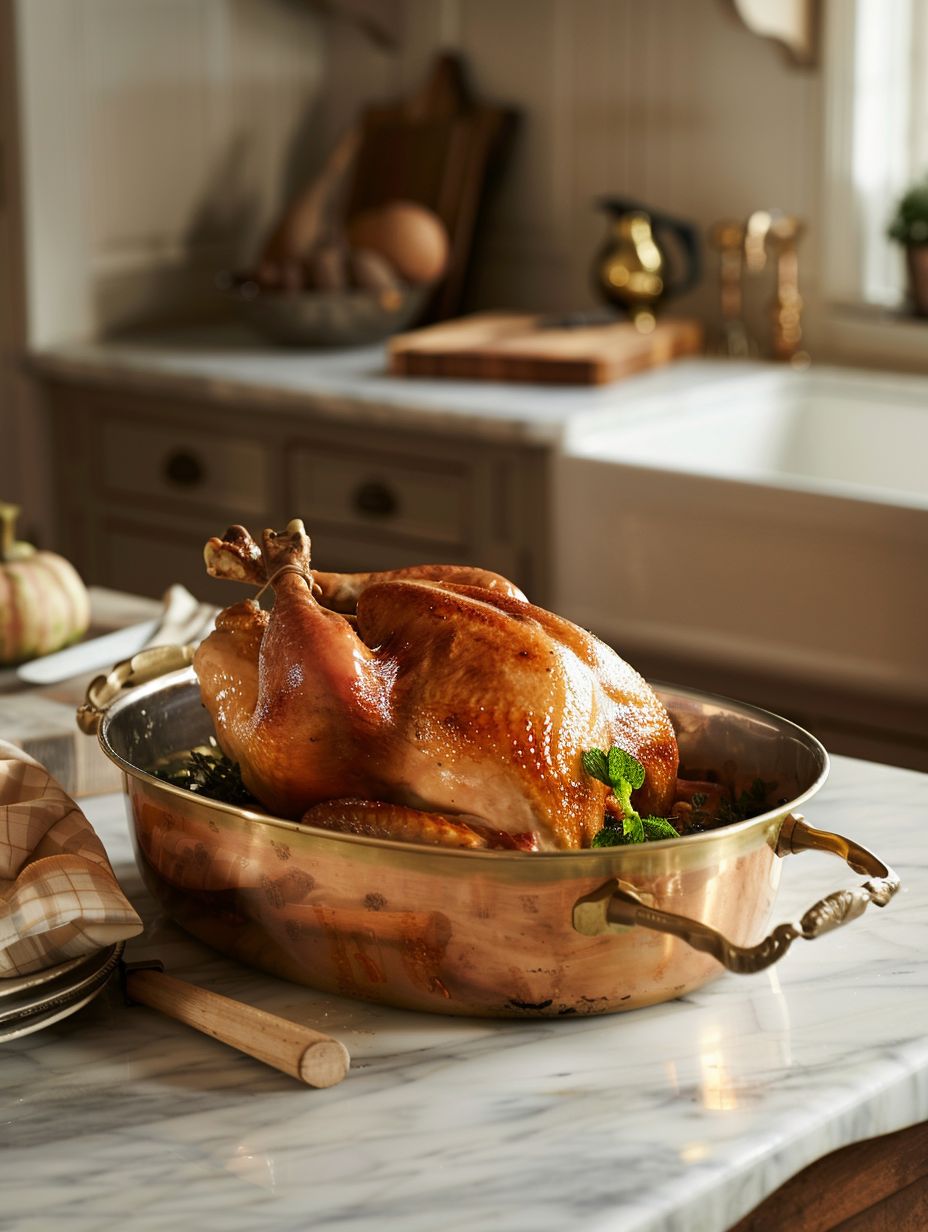
Some of the basic types of French cooking methods include:
- Sauté: This method involves quickly cooking small, uniform pieces of food in a hot pan with oil or butter. The food is continuously stirred or shaken in the pan to ensure even cooking and to prevent burning.
- Braise: This method involves cooking ingredients in a small amount of liquid, covered, over low heat for a long period of time. The result is tender, flavorful dishes that are perfect for cold weather.
- Roast: This method involves cooking ingredients in an oven, often with the addition of herbs and spices, to create a caramelized exterior and a tender, juicy interior.
- Grill: This method involves cooking ingredients over an open flame, which results in a charred exterior and a smoky flavor.
- Poach: This method involves cooking ingredients in a simmering liquid, which results in a delicate texture and a subtle flavor.
- Simmer: This method involves cooking ingredients in a liquid that is just below boiling, resulting in a gently cooked dish.
- Boil: This method involves cooking ingredients in boiling water, resulting in a dish that is cooked quickly and evenly.
These cooking methods are vital. The choice of cooking method depends on the ingredients being used, the desired final texture, and the plate’s flavor profile. Mastery of these methods is an important aspect of French cuisine, setting it apart from other culinary traditions.
French Food Techniques
Several French food preparation techniques are unique to French cuisine.
- Fricassée is a preparation technique of slow-cooking meats and vegetables in a white sauce.
- Confit is a cooking method of preserving meat, typically duck or goose, in its own fat.
- Suprême refers to the best cut of a meat, often boneless chicken breasts; can also be applied to fruits and vegetables.
- Escalope is a food preparation technique of thinly slicing meat, coating it in flour, egg, and breadcrumbs, then pan-frying.
- Au jus means “with juice,” referring to meat dishes served with its natural juices.
- Meunière is a French fish cooking technique of pan-frying fish in butter and lemon with parsley.
- À la nage is a cooking style where food is simmered in court-bouillon, a flavored liquid.
- Bain marie is a technique of gently heating food in a hot water bath.
- En papillote involves cooking food inside parchment paper or a foil parcel.
- En croute refers to a dish baked in a wrapped pastry crust.
- Croustade is a dish composed of a savory mixture baked in a pastry shell.
- Farci means “stuffed,” often referring to vegetables or meat that is filled with stuffing.
- Gratiné refers to French dishes topped with cheese or breadcrumbs and baked until golden.
- Purée is a food preparation technique of mashing or blending food into a smooth consistency.
- Monter au beurre refers to whisking butter into sauces to thicken and add flavor.
French Food Presentation
The last aspect of French cooking involves the art of food presentation. French cuisine is known for its precise and elegant arranging and decorating of food. French plating techniques must be followed to serve food properly in France.
Here are some basic concepts of French food presentation:
- Plateware: French cuisine often uses specific plateware, such as round or oval plates, to complement the dish and enhance its presentation.
- Balance: French dishes are often balanced, with a mix of textures and flavors that work together to create a harmonious whole.
- Symmetry: French dishes are often arranged on the plate in a symmetrical fashion, with each element of the dish centered in its proper place.
- Height: French dishes are often presented with height, with ingredients stacked or arranged to create visual interest and a sense of drama.
- Color: Color is an important part of French food presentation, with dishes often containing a mix of different colors to create visual interest.
- Sauce: Sauce is an important part of French cuisine, and it is carefully placed on the plate to enhance the presentation of the dish.
- Garnish: A well-placed garnish can add flavor and visual appeal to a dish. French cuisine often uses herbs, edible flowers, and other ingredients as garnishes.
The beauty of French dish presentation is an important part of the French culinary tradition. It helps to elevate the dining experience for the diners while shining light on the skill of the chef. The mastery of French food presentation is an art in and of itself!
These French cooking basics should set you up for making delicious French meals and dishes that are sure to please you and your family.
Once you’ve mastered the art of French cooking, you can move on to French baking basics, how to host a French dinner party, and French food service basics!
